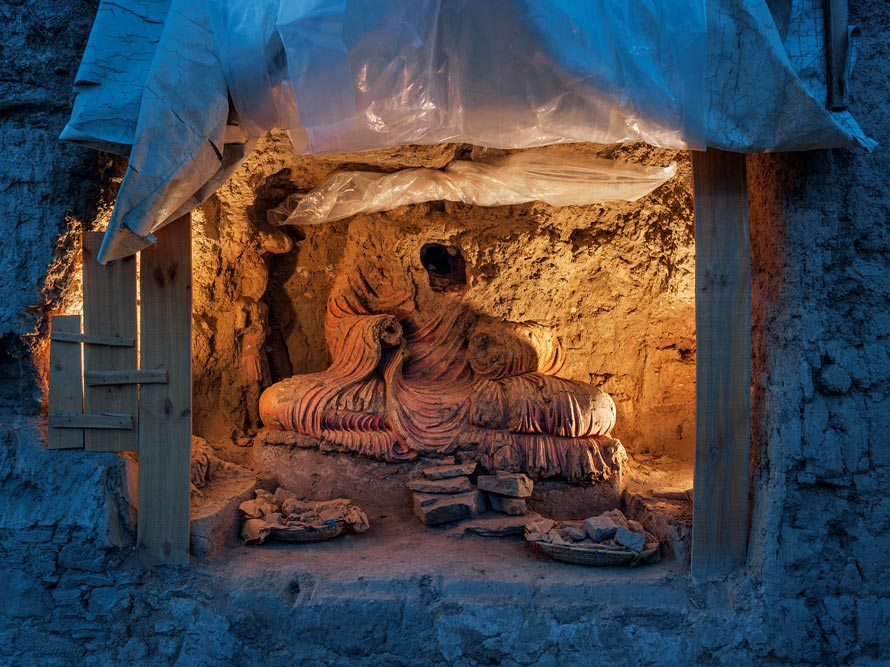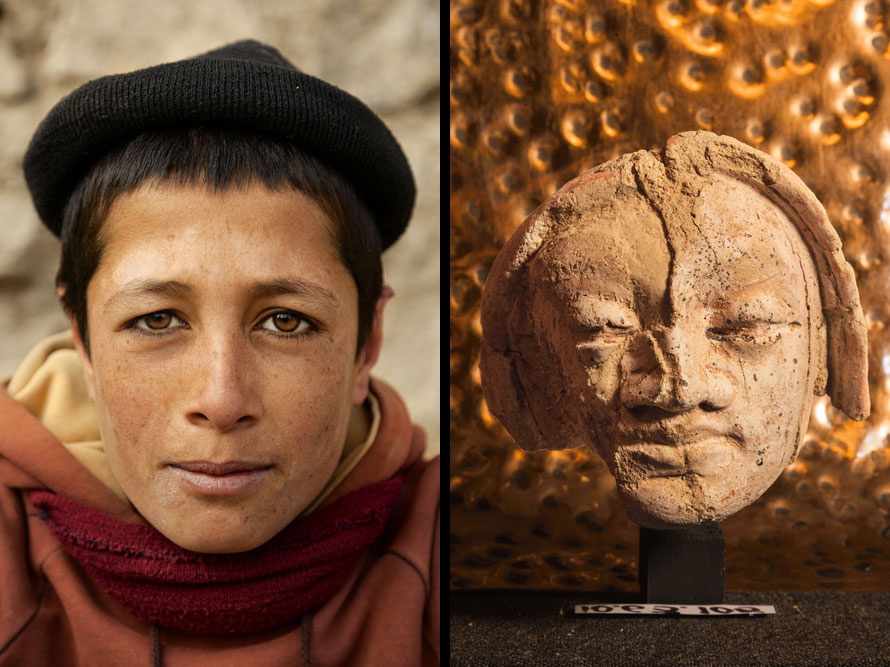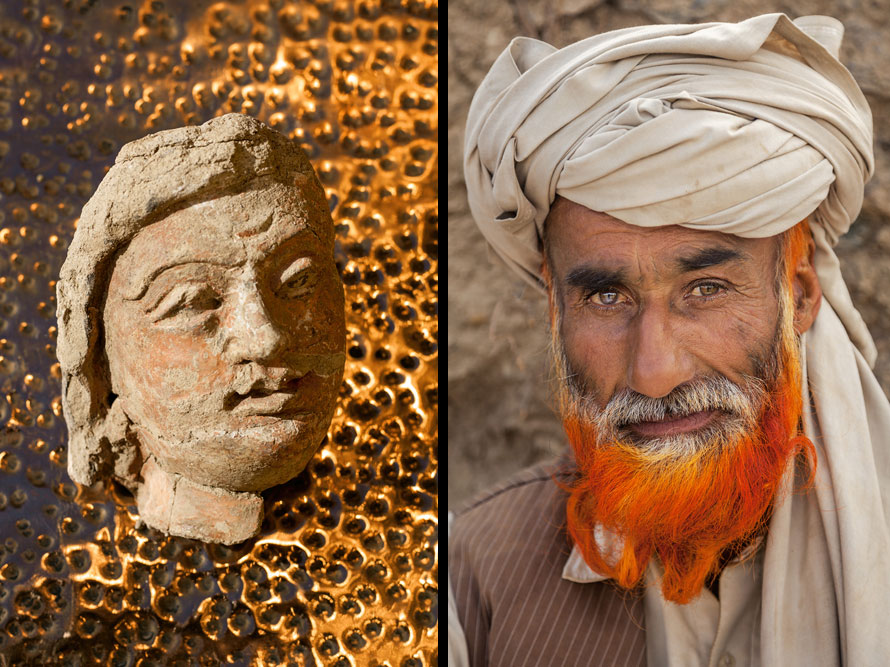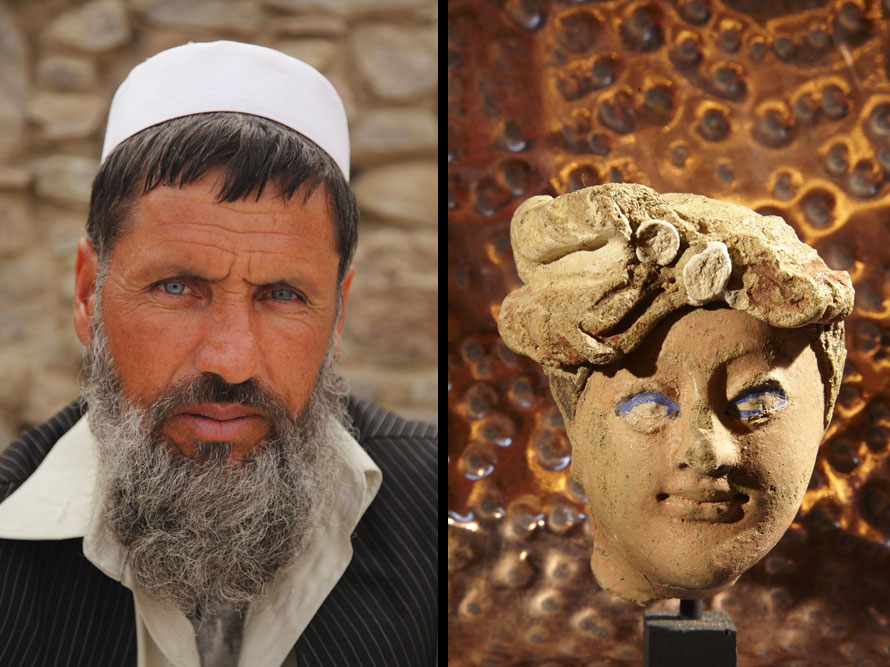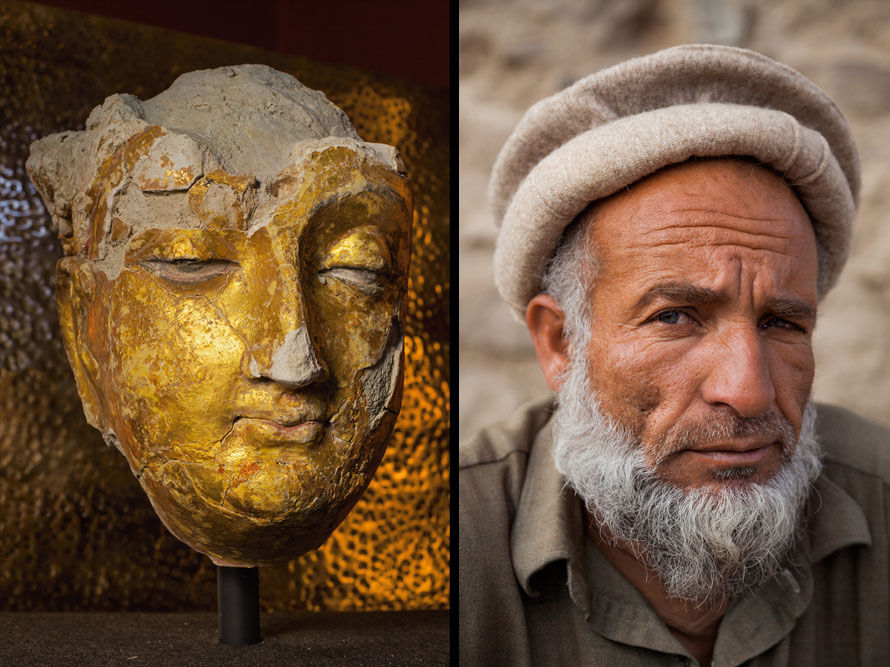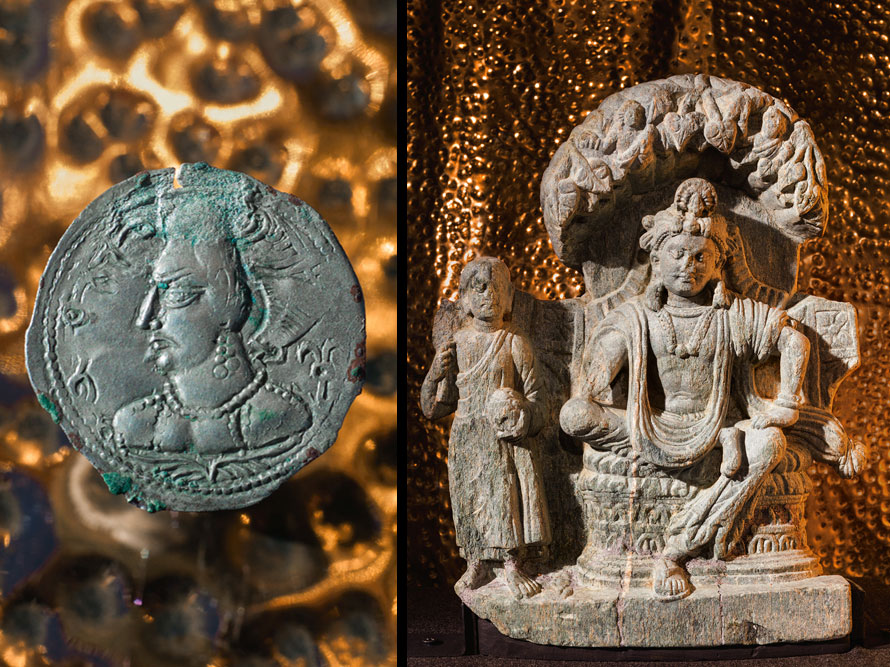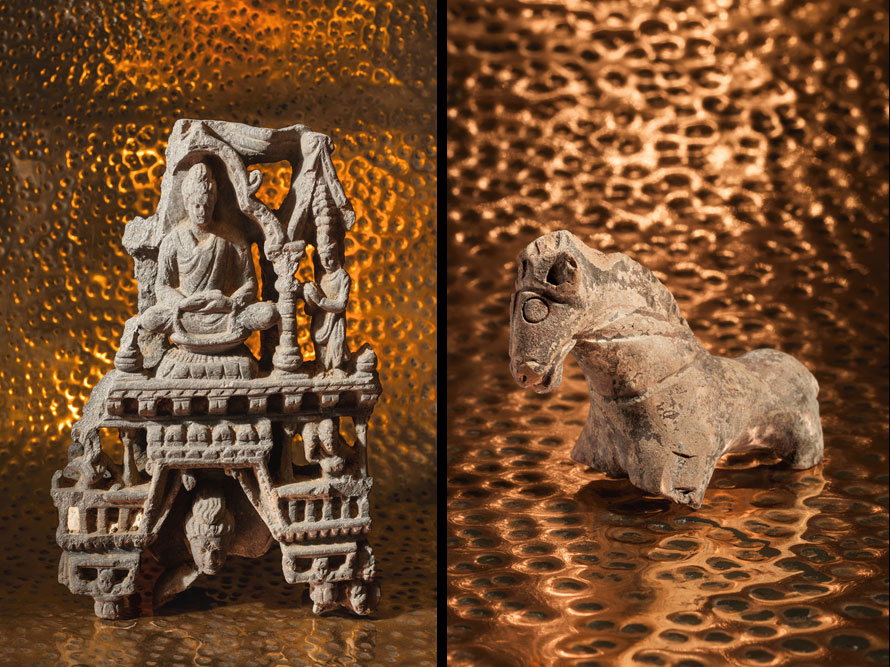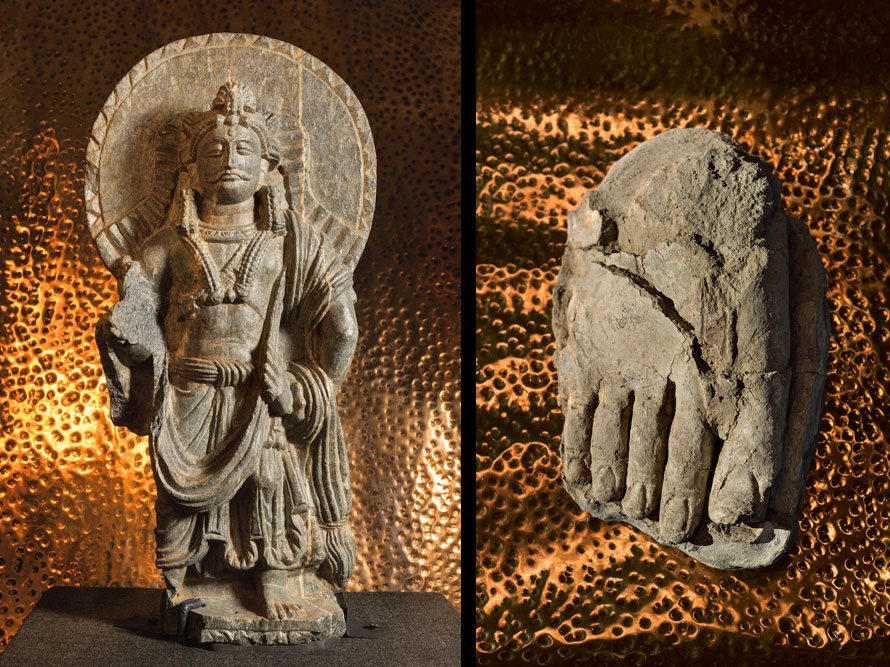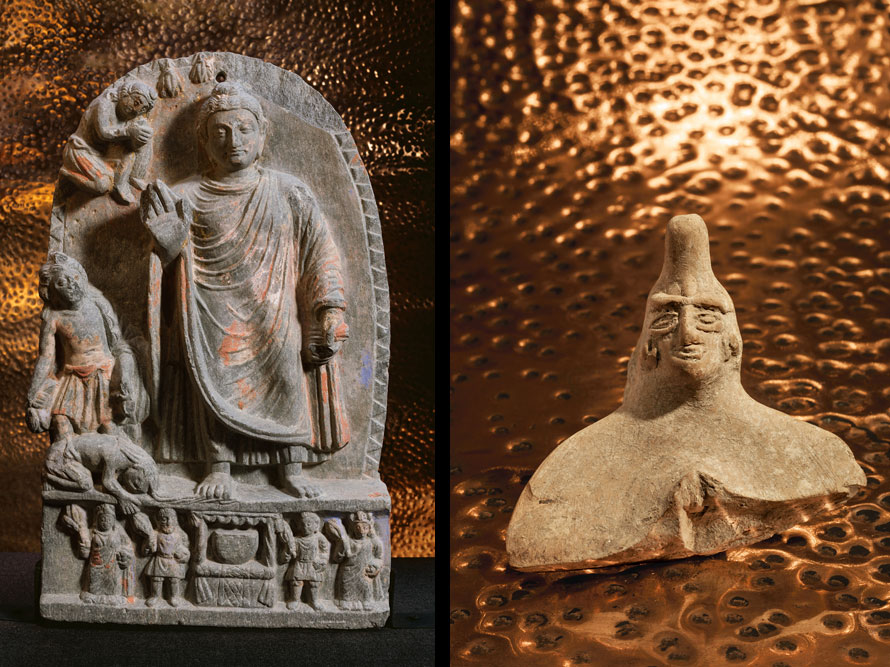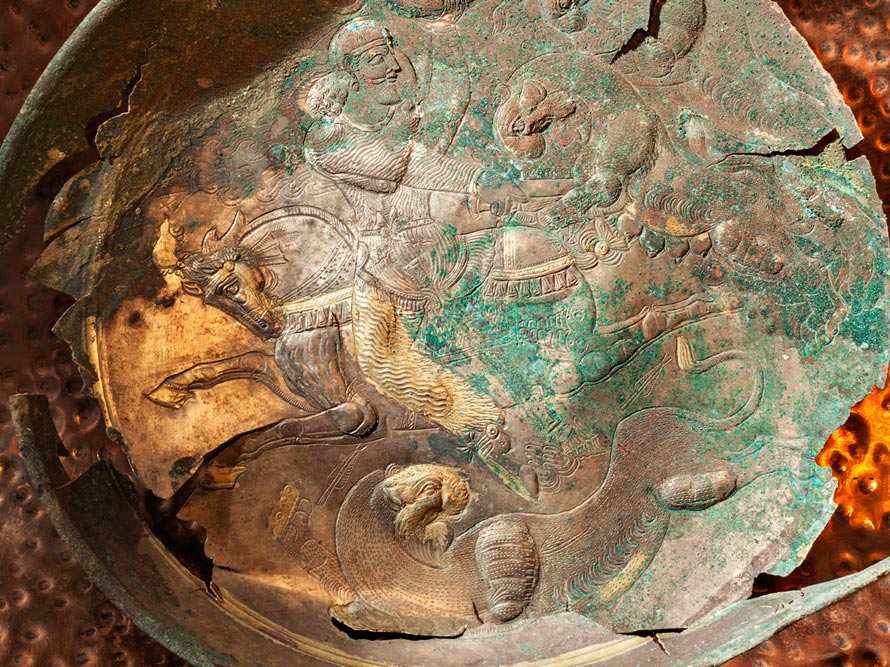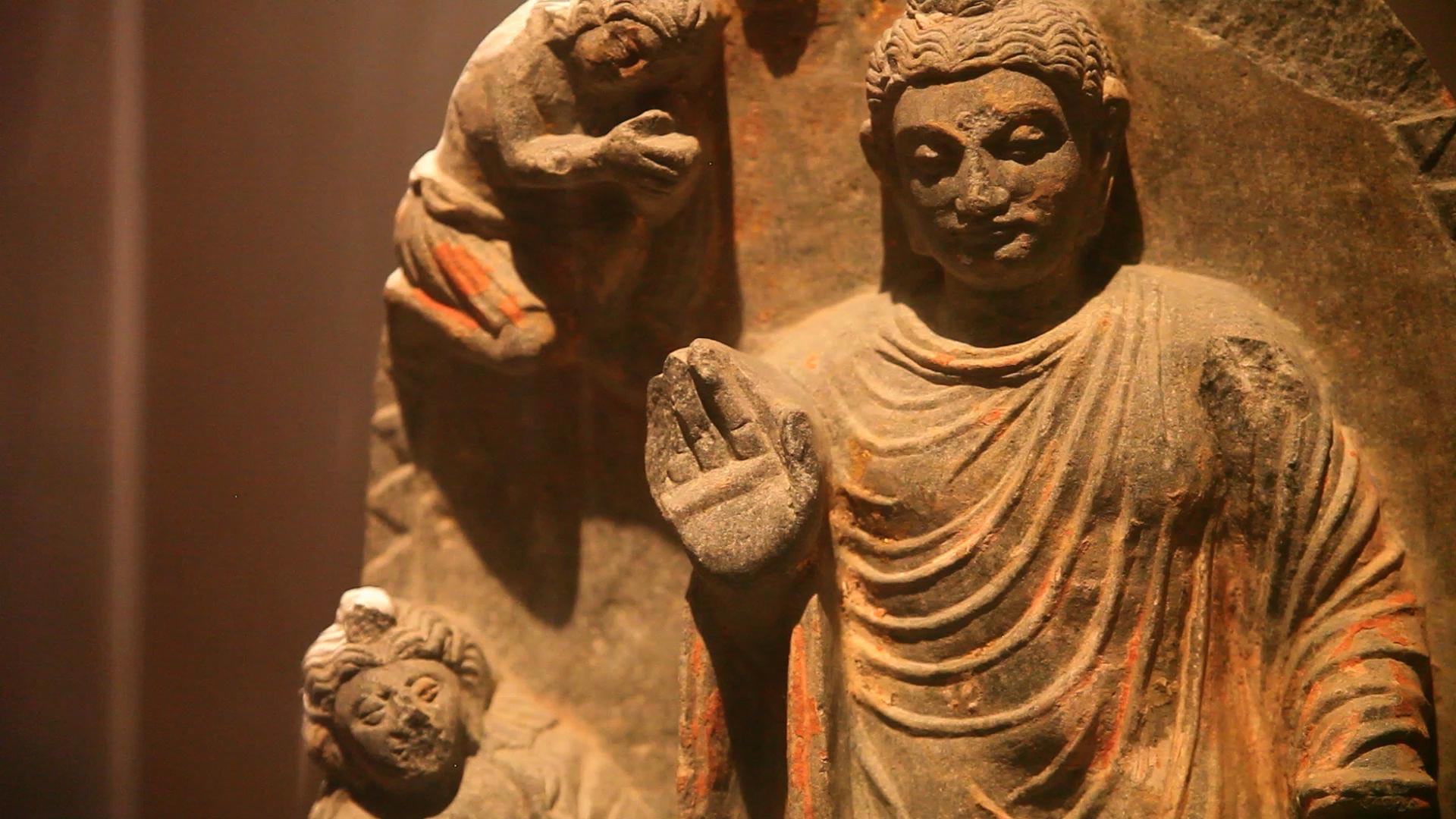
SMA Wins the Best One-Hour Documentary Prize at Cinemambiente in Italy!
We are incredibly honored to be the recipient of the prize for best documentary in the "International One-Hour Film Competition" at the 2015 Cinemambiente International Environmental Film Festival in Torino, Italy!
We are incredibly honored to be the recipient of the prize for best documentary in the "International One-Hour Film Competition" at the 2015 Cinemambiente International Environmental Film Festival in Torino, Italy!
This special prize recognizes Saving Mes Aynak for its, "balanced presentation and concise treatment of the political, cultural, human, social, and environmental issues in present day Afghanistan." Our thanks to Cinemambiente and jury members Natasha Despotovic, Antonella Frontani, and Massimiliano Mazzotta for this wonderful recognition.
Cinemambiente, which is now in its 18th year, is one of the leading environmental film festivals in the world. You can learn more about this important festival and their mission to help save the planet by raising green awareness through cinema by visiting their website.
See SMA at the CINEMAMBIENTE Environmental Film Festival in Turin, Italy on Oct. 9th
We're excited to bring Saving Mes Aynak to Italy for the 18th annual Cinemambiente - Environmental Film Festival on October 9th at 6pm...
We're excited to bring Saving Mes Aynak to Italy for the 18th annual Cinemambiente - Environmental Film Festival on October 9th at 6pm! Cinemambiente is an important film festival that presents outstanding environmental films in order to promote cinema and green awareness. Their motto, "Movies Save the Planet" is one that we believe in, and we're honored to be a part of this year's festival.
You can learn more about our upcoming screening by visiting their website here
Indiewire Names Brent Huffman As One of 'The 25 Documentary Filmmakers to Follow on Twitter'
Director Brent Huffman's work on social media to help #SaveMesAynak has garnered praise from Indiewire, as Brent was just named one of the '25 Documentary Filmmakers to Follow on Twitter'...
Director Brent Huffman's work on social media to help #SaveMesAynak has garnered praise from Indiewire, as Brent was just named one of the '25 Documentary Filmmakers to Follow on Twitter'!
Congratulations, Brent! You can check out the full list of documentary filmmakers here.
Saving Mes Aynak to Play at the Louvre on January 28th!
We have some very exciting news to share with you: on January 28, 2016 Saving Mes Aynak will play at the Musée de Louvre in Paris, France as a part of the Journées Internationales du Film Sur l'Art. This is a big moment for Mes Aynak, as the Louvre is arguably the most famous museum in the world....
We have some very exciting news to share with you: on January 28, 2016 Saving Mes Aynak will play at the Musée de Louvre in Paris, France as a part of the Journées Internationales du Film Sur l'Art. This is a big moment for Mes Aynak, as the Louvre is arguably the most famous museum in the world. More news, including ticket information and exact screening time, is forthcoming; we will update you as soon find out! Until then, please visit the Louvre's website to learn more about its amazing collection of art and history.
Join Us on October 17th at Yale University
We are honored to be partnering with the the Yale Himalaya Institute to bring Saving Mes Aynak to Yale University for a screening on Saturday, October 17th at 7:00pm! After the screening will be a Q&A with the director Brent E. Huffman, who will be in attendance...
We are honored to be partnering with the the Yale Himalaya Institute to bring Saving Mes Aynak to Yale University for a screening on Saturday, October 17th at 7:00pm! After the screening will be a Q&A with the director Brent E. Huffman, who will be in attendance. The screening is also co-sponsored by the Yale Institute for the Preservation of Cultural Heritage. Thank you to Yale University for allowing us to screen our film and share the story of Mes Aynak with its student body and surrounding community.
Screening Location:
Luce Hall Auditorium See map
34 Hillhouse Ave
New Haven, CT 06511
Click here to learn more about this screening and the Yale Himalaya Institute!
SMA is an Official Selection of the Arkhaios Film Festival
Please join us on Saturday, October 24th at 3:30pm ET in Hilton Head Island, SC for the Arkhaios Film Festival...
Please join us on Saturday, October 24th at 3:30pm ET in Hilton Head Island, SC for the Arkhaios Film Festival!
Founded in 2013 by Jean Guilleux, The Arkhaios Cultural Heritage and Archaeology Film Festival takes place each year to celebrate South Carolina's Archaeology Month. As a part of their educational initiative to share the discovery of past cultures and the importance of archaeological research with the local surrounding community, the screening will be FREE to the general public.
If you are in the South Carolina area, we hope you will be able to join us for this special community event. Please tell your friends, too!
Click here to learn more about Arkhaios and our upcoming screening
Join us at the 1st Annual Providence Art & Design Film Festival on October 31
Saving Mes Aynak will screen at the first annual Art & Design Film Festival in Providence RI on Saturday, October 31 at 1:30pm!
Saving Mes Aynak will screen at the first annual Art & Design Film Festival in Providence RI on Saturday, October 31 at 1:30pm! We are proud to be a part of this burgeoning festival and included in their inaugural lineup. A big thank you to the Providence Cinematheque and Cable Car Cinemas for all of their hard work.
You can purchase tickets online by clicking here
We hope you will be able to join us!
The Afghanistan Minister of Mines and Petroleum Makes a Promise to Build Mes Aynak Museum
Daud Saba, Afghanistan's Minister of Mines and Petroleum has promised to build a new museum dedicated to Mes Aynak and it's 5,000 (and counting) years of history. This museum will purportedly be built in Logar Province (where Mes Aynak is located) on 40 hectares (98 acres) of land allocated just for this project...
Daud Saba, Afghanistan's Minister of Mines and Petroleum has promised to build a new museum dedicated to Mes Aynak and it's 5,000 (and counting) years of history. This museum will purportedly be built in Logar Province (where Mes Aynak is located) on 40 hectares (98 acres) of land allocated just for this project.
Although this is a positive development for preserving the artifacts already excavated from the site, it will do nothing to save the site itself, or the irreplaceable structures, temples, and stupas that cannot be moved. 90% of the site has yet to be excavated, and this museum -- while important -- will do nothing to ensure that Mes Aynak and its thousands of years of untold history is protected.
We applaud the Afghan government for looking to preserve some of Mes Aynak's history, but we implore them to protect and save the site itself -- not just pieces from it -- for all future generations to learn from.
September 15 - Special Screening at the Carnegie Endowment for International Peace!
We are excited to announce that Saving Mes Aynak will screen in Washington, DC for a one-night-only event at the renowned Carnegie Endowment for International Peace! Please join us on September 15 at 5:30pm EST for this special screening......
We are excited to announce that Saving Mes Aynak will screen in Washington, DC for a one-night-only event at the renowned Carnegie Endowment for International Peace! Please join us on September 15 at 5:30pm EST for this special screening; in attendance will be director Brent E. Huffman, who will participate in a Q&A discussion following the film presentation alongside Tom Carver, Carnegie's VP for Communications and Strategy (and former BBC correspondent). We hope to see you there!
CLICK HERE TO REGISTER TO ATTEND
EVENING SCHEDULE
- Reception: 5:30 - 6:30pm
- Screening: 6:30 - 7:30pm
- Discussion with Brent Huffman and Tom Carver: 7:30 - 8:30pm
NPR: What's Better For Afghanistan's Future: Buddha Tours Or A Copper Mine?
NPR published an insightful piece on Mes Aynak, its fate, and the potential future of Afghanistan. You can read the full article here, or on the NPR website.
NPR published an insightful piece on Mes Aynak, its fate, and the potential future of Afghanistan. You can read the full article below, or on the NPR website.
NPR Staff:
About an hour's drive south of Kabul, there's a vast Buddhist archaeological site dating back at least 1,500 years. It happens to be sitting on top of one of the biggest untapped copper deposits in the world, potentially worth billions of dollars.
Eight years ago, the Afghan government made a deal with a Chinese conglomerate to mine the copper, but mining hasn't begun and likely won't for several more years. The area in which the copper is located, Logar Province, presents challenges in both security and infrastructure: no reliable water or power supply, no railway for transporting copper and increasing threats from the Taliban.
The U.S. Geological Survey has estimated that Afghanistan holds $1 trillion in mineral wealth but none of it has ever been developed. This could represent a huge and much-needed source of revenue for a country long dependent on foreign aid. But given other countries' experience of the so-called "resource curse," concerns have been raised over whether Afghanistan's natural resources can or will be exploited responsibly. And part of the concern has centered around whether extracting copper at Mes Aynak must result inevitably in the destruction of a spectacular archaeological site that has been compared to Machu Picchu and Pompeii. Historical riches like this, advocates argue, represent a different kind of wealth, and could hold the key to a thriving tourism industry in the future.
Hannah Bloch wrote about Mes Aynak in the September issue of National Geographic magazine. The images in this post are from that issue.
Tourism in Afghanistan?
It may sound farfetched now, but keep in mind that tourists think nothing of going to Angkor Wat, and Cambodia was completely ravaged by war just a few decades ago. Tourism is big in Vietnam, too. Afghanistan has breathtaking natural beauty and historic sites. Before all the years of conflict that have come to dominate what we think we know of Afghanistan today, the country was a tourist destination for adventure travelers. It was a must-stop on the "hippie trail" as travelers (many in search of cheap drugs) went overland through Asia, and tourists flocked to Bamiyan to see two colossal, sixth-century statues of the Buddha carved into a cliff-face.
Those are the statues that were destroyed by the Taliban?
The Taliban blew up the Bamiyan Buddhas in March 2001, and even up till then some tourists had been coming to marvel at them. Bamiyan really depended on tourism income, and now it has virtually none. I visited there in Dec. 2013, and saw a few Afghan students roaming around the site where the Buddhas once stood but definitely no tourists.
I know this is off the topic of the mine, but could the statues ever be resurrected to bring back tourists?
The rubble from the destruction of the Buddhas has all been gathered and saved on site while Afghanistan, UNESCO and the international community try to figure out whether to rebuild the Buddhas or not. Many folks in Bamiyan support rebuilding because they believe it'll help bring tourists back, and the local economy has really taken a beating in their absence for the last 14 years.
But there's also a push to keep the niches empty. My own feeling is people would still come. Those empty niches are a powerful reminder of what was once there. But for tourism to start up, a lot will have to change. For now, it's really only safe to get to Bamiyan by plane. Most companies, NGOs and even the Afghan government have forbidden their employees to travel by road because it's so dangerous — it's subject to Taliban roadblocks.
So clearly, security is key to any future economic development.
Security is the issue that is really going to have to be addressed before there can be any tourism. Or copper mining, for that matter.
You mentioned the "resource curse." Part of the curse can be the environmental devastation that results from extracting resources like copper. Is that an issue here?
I talked to local activists and researchers who were very concerned about the environmental impact. There's a scarcity of water in the area as it is, and locals think it will only get worse once mining starts. Villagers told Integrity Watch Afghanistan that the water table dropped by six feet when preliminary drilling for the mine started. It's a big worry for them — and pollution is, too. They fear the chemicals used in processing copper could percolate through Logar Province's ground into aquifers that are shared with Kabul.
There are also worries that once full copper production starts, the mining could generate millions of tons of waste rock and processing byproducts called tailings every year. It's unclear where that would be disposed.
So is it possible to protect the archaeology at a place like Mes Aynak but still have mining?
A group of experts examined the issues in 2012 and concluded that the two could occur "in parallel." The World Bank — which has been supporting both Mes Aynak's archaeology and the prospective mine with millions of dollars in grants — seems to think both mining and heritage protection are possible. But probably easier said than done. It strikes me as unfair when outsiders want to begrudge Afghanistan the right to exploit and benefit from its own tremendous mineral wealth. And some of the foreign archaeologists I spoke with understood that very well and felt it was not their place to say Afghanistan should forgo a mine in favor of cultural heritage.
But others, especially some of the Afghan archaeologists I met, felt very strongly that Mes Aynak should be studied and preserved and there should be absolutely no mining. The copper is going to run out someday, they said, but the statues are forever. The part of the site that they've been concentrating on, which is yielding an incredible wealth of finds, would be completely destroyed by a mine.
I guess the irony is that none of the archaeology would be going on if there were no prospect of a mine. It's the threat of the mine that galvanized the cultural heritage community to demand that the site be properly excavated and recorded to the extent possible. And the World Bank has poured a lot of money into the effort. At first the archaeologists were rushing to do their work because they were given a quick deadline, but there have been so many delays to starting the mine that it's worked to the advantage of the archaeology. Mes Aynak was already being looted before 2007 and if there were no archaeology (and no prospect of a mine), it seems likely the place would be destroyed by looting. That's a problem at a number of Afghan sites.
The thing to remember, too, is that archaeology is by its very nature a destructive science. The Society for American Archaeology says, "Once a site is excavated it is gone forever." So the only way to really preserve a place like Mes Aynak would be to keep it completely untouched.
That doesn't seem like an option.
No, especially since the archaeology is already well underway — and keeping it untouched means everything they're finding would never have the chance to be appreciated by anybody. But maybe it's worth remembering that the Buddha taught his followers that change is inevitable and not to be attached to material objects. The archaeologists at Mes Aynak are definitely attached, understandably, to what they're digging up, but the notion of impermanence doesn't really escape them, either. A Tajik archaeologist said to me: "All of us are only guests in this world."
And what's the prevailing wisdom in government circles: mining or tourism?
It depends whom you ask. Mining is widely seen a potential "backbone" for the economy, so there's a lot of acknowledgment of the huge role it can play. But there's pride in Afghan heritage, too, and a mining minister from the previous Afghan government told me the government was learning a lot about how best to proceed through this experience with Mes Aynak. The current president, Ashraf Ghani, is actually an anthropologist by training and made a point of visiting the archaeological site at Mes Aynak back in the winter.
I was told by a former culture ministry official that tourism was the second-largest source of income for Afghanistan in the 1970s. He told me now he wants to see the country's first income be from tourism and he does believe tourism is going to the answer in the long term.
It's not just ancient history they're finding at Mes Aynak, right? The area has a dramatic recent history as well.
Right. The 9/11 Commission reported that Mes Aynak was the site of an elite al Qaida training camp in the 1990s. Four of the 9/11 hijackers were trained right there. I was taken by one of the archaeologists to visit a cave that was used as part of the camp. He took me through it as if it were an ancient site — and it did look pretty rough. The ceiling was blackened. He said it was from a U.S. firebomb in late 2001. He pointed out a pen where the fighters kept their livestock, the stone slab "sofa" they sat on and slept on, the place where they stored their food. It was very strange to put such a recent and horrifying set of events into historical context like this, but he said to me, "This, too, is a kind of archaeology."
It made me wonder what archaeologists of the future are going to study in Afghanistan and what kind of Afghanistan those archaeologists will be working in — a peaceful, prosperous tourist destination where Mes Aynak is a household name and a place that's easy to visit, like Pompeii today? Or someplace violent and fractious and facing an uncertain future? I hope it's the former.
Japanese and German Premieres of Saving Mes Aynak
The International Academic Forum (IAFOR)has announced that Saving Mes Aynak will be the featured screening at the 2015 IAFOR Documentary Film Awards!
The International Academic Forum (IAFOR)has announced that Saving Mes Aynak will be the featured screening at the 2015 IAFOR Documentary Film Awards!
The film's director, Brent E. Huffman, will receive their and be the Keynote Speaker at IAFOR's and The Asian Conference on Film & Documentary (FilmAsia2015). This year the events take place in November 12-15 at the Art Center of Kobe in Kobe, Japan. Saving Mes Aynak will screen on November 14 in its Japanese premiere.
Saving Mes Aynak was also recently announced as an official selection of the 2015 Doku.Arts Festival in Berlin. The film will screen twice in its German premiere at the event, to be held September 9-27 at Deutsches Historisches Museum.
More upcoming screenings in the US and internationally will be announced soon!
New Photos of Mes Aynak in September's Edition of National Geographic!
Mes Aynak is profiled in this month's edition of National Geographic in a thought-provoking article and series of photos...
Mes Aynak is profiled in this month's edition of National Geographic in a thought-provoking article and series of photos.
You can view these photos in the gallery above, or on the National Geographic website. All credit goes to photographer Simon Norfolk. To read the article by Hannah Bloch, click here.
Help Raise Awareness of Mes Aynak Through Your Twitter Header!
Twitter is a powerful social media tool that has become an important medium for raising awareness of crucial global issues. You can help spread the word on Mes Aynak by using this #SaveMesAynak Twitter header photo:
Click on the image above (so it appears in a larger size), and right-click to save and download. After that, simply upload to your Twitter photo by clicking "Edit Profile" on your Twitter page! Together we WILL #SaveMesAynak from destruction!
Official Selection of the Prestigious DokuFest! Screening August 12th!
We are proud to announce that Saving Mes Aynak will screen as an official selection of DokuFest, International Documentary and Short Film Festival, in Prizren, Kosovo on August 12th at 12pm!
We are proud to announce that Saving Mes Aynak will screen as an official selection of DokuFest, International Documentary and Short Film Festival, in Prizren, Kosovo on August 12th at 12pm! We are honored to be taking part in this wonderful festival, and we look forward to sharing the important story of Mes Aynak with a whole new audience and country.
For more information, including how to buy tickets, click here
LA TIMES: Can a film help save an Afghan archeological site before it's turned into an open-pit mine?
Famed LA Times columnist Carolina A. Miranda wrote a beautiful piece about Mes Aynak and Saving Mes Aynak. Read on for the full article!
Read the interview and article on Saving Mes Aynak on the LA Times Website
By Carolina A. Miranda, LA Times Columnist
In its day, the ancient city of Mes Aynak was a wonder of temples, monasteries, monuments and statuary. Located in the mountains about 90 minutes east of Kabul, in Afghanistan, this important Silk Road hub bears Hellenistic, Persian, Central Asian, Tibetan, Indian and Chinese influences. It's peak was between the 5th and 7th centuries AD, when Buddhism was on the rise throughout the Hindu Kush.
But this incredible archaeological site, which dates back roughly 5,000 years, is in danger of destruction: In 2008, a Chinese mining consortium bought a 30-year lease to the site from the Afghan government for the purposes of an open-pit copper mine.
This cultural travesty serves as the basis of Brent Huffman's documentary, "Saving Mes Aynak," which tells the story of one Afghan archeologist's struggle to excavate as much of the site as possible before the mining company takes it over — all while dealing with vanishing budgets and dodging improvised explosive devices unhelpfully deposited by the local Taliban.
"What you see in the film is the point at which all of the international archaeologists leave and there is just a skeleton crew of Afghan archaeologists excavating," says Huffman. "And at the end of summer, they'll be pushed out so that the Chinese mining company can start mining operations."
Mes Aynak, located in the mountains east of Kabul, came to the attention of modern archaeologists in the 1960s when a French geologist surveyed the area for copper deposits, and instead found a buried ancient city that covered an estimated 2.5 square miles.
Afghan history, unfortunately, has repeatedly interrupted efforts to conduct a full-scale excavation of the site. There were coups and a communist revolution in the 1970s, followed by the Soviet invasion, and later, in the 1990s, the rise of the Taliban. An international team of archaeologists began excavating the site in 2004, uncovering ceremonial stupas, golden Buddhas and other statuary. But security issues have made continuous digs problematic and many have left.
“This film is a story about Afghans fighting for their own culture. ”
The heart of "Saving Mes Aynak" is Qadir Temori, the good-humored Afghan archaeologist who has poured his efforts into rescuing what he can of the ancient site before the clock runs out. In the film, he is seen facing everything from inclement weather, to threatening text messages from the Taliban, to government officials who seem unable or unwilling to pay the archaeological staff or supply them with basic materials (despite the fact that millions in international funds have been invested in the project).
"Ultimately, this film is a story about Afghans fighting for their own culture and fighting for their own history," says Huffman. "Hopefully it puts a human face on the struggles that Afghans face — something that goes beyond victims and terrorists."
In the days since "Saving Mes Aynak" premiered at the International Documentary Film Festival in Amsterdam late last year, the film has helped draw international attention to the importance of this buried city, which drew on influences from as far west as Greece and as far east as China. (The Guardian has a terrific overview of the site's history.)
Huffman says that the country's newly installed mining minister recently questioned the terms of the mining contract. "He critiques the corruption and how bad the contract is for Afghanistan," says Huffman. "Nothing like that has ever happened."
But that doesn't mean that Mes Aynak is by any means secure. Huffman says he is doing his part to get the word out.
On Saturday evening, the film will be screened on Al Jazeera America. It is also available for streaming online. And, in the fall, the director intends to take it to Kabul for screenings there. He will also take the related online petition — boasting more than 82,000 signatures from all over the world — asking the Afghan government to reconsider the terms of the mining deal.
"The 5,000-year-old history at Mes Aynak, it's world history," says Huffman. "And that is something we should all care about."
"Saving Mes Aynak" airs on the program "Witness" on Al Jazeera America on Saturday at 10 p.m. ET / 7 p.m. PST. You can also stream the film on the Kartemquin Films website for $9.99 (or for free if you live in Afghanistan).
Find me on Twitter @cmonstah. Get news about the film @SavingMesAynak
Encore Presentation on Al Jazeera America Saturday, July 18th!
Saving Mes Aynak will have an encore presentation on Al Jazeera America Presents this Saturday, July 18th at 10pm ET / 7pm PT!
Saving Mes Aynak will have an encore presentation on Al Jazeera America Presents this Saturday, July 18th at 10pm ET / 7pm PT! After a successful premiere on Sunday, July 12th, we are incredibly excited to reach even more people with this important message through this encore broadcast. If you have Al Jazeera America, please double check your local TV listings to confirm the air time! Also, don't forget if you have Al Jazeera English, you can watch the film for free through August 1st on their website.
Check out this cool commercial, too, that AJAM put together for our broadcast:
Saving Mes Aynak on Huffington Post Live
Brent Huffman appeared on Huffington Post Live with Marc Lamont Hill to talk about Mes Aynak and our global effort to save this historic world heritage site.
Brent Huffman appeared on Huffington Post Live with Marc Lamont Hill to talk about Mes Aynak and our global effort to save this historic world heritage site.
Play video above, or cLICK HERE TO WATCH THE MES AYNAK HUFFINGTON POST LIVE INTERVIEW
Sign up Now for the #SaveMesAynak Social Media Thunderclap on July 12th at 1pm EDT!
In an effort to raise awareness and share the #SaveMesAynak message with people all over the world, we are organizing a social media Thunderclap for Saturday, July 12th at 1pm EDT!
In an effort to raise awareness and share the #SaveMesAynak message with people all over the world, we are organizing a social media Thunderclap for Saturday, July 12th at 1pm EDT!
What is Thunderclap, and why is it important? Thunderclap is a social media platform that will allow the #SaveMesAynak message to be mass-shared throughout social media at the exact same time! This is an amazing opportunity for us to reach hundreds of thousands of people in one instant, and the effect it will have on our campaign to save this amazing world heritage site is immense.
To sign up to share the #SaveMesAynak message on your social media profiles (Facebook, Twitter, etc.), simply follow this link: http://thndr.it/1KqDSIj
We are currently set to reach over half a million people. If enough people sign up, we could reach 1 MILLION on Saturday, July 12th! Please add your name to the list, and share the Thunderclap with your friends!
SIGN UP FOR THE #SAVEMESAYNAK THUNDERCLAP ON JULY 12TH AT 1PM EDT!
SMA to Broadcast on Al Jazeera America July 12th & 18th!
Continuing our partnership with Al Jazeera, Saving Mes Aynak will broadcast on Al Jazeera America at 10pm ET on Sunday, July 12th, with an encore presentation on Saturday, July 18th at 10pm ET!
Continuing our partnership with Al Jazeera, Saving Mes Aynak will broadcast on Al Jazeera America Presents at 10pm ET on Sunday, July 12th, with an encore presentation on Saturday, July 18th at 10pm ET! Please mark your calendars and join us for this special event. If you can, help us spread the word by telling your friends and family!
For more information on Al Jazeera America: http://america.aljazeera.com/
#SaveMesAynak Day in Newsweek
#SaveMesAynak Day was reported on by Newsweek!
#SaveMesAynak Day was reported on by Newsweek:
"A 5,000-year-old historic site in Afghanistan may be destroyed by a Chinese mining company. The site, known as Mes Aynak, is filled with ancient Buddhist relics, many of which have yet to be excavated. Unfortunately for archaeologists, the site also sits atop a valuable copper mine.
On July 1, the makers of the Saving Mes Aynak documentary organized #SaveMesAynak Day in hopes that people would spread the word about their film and the site in general...."















